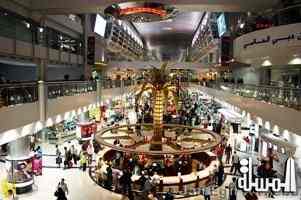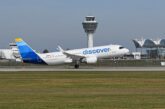
Dubai airports growth projections revised to 126 million passengers by 2020
ATP- arab tourism portal- Dubai, (WAM)- Growth is pushing the Dubai Airports – operator of Dubai International and Al Maktoum International in Dubai World Central – to expand.
Speaking at the Future of Border International Conference in Dubai Thursday, Paul Griffiths, Chief Executive Officer of Dubai Airports , said: "Our revised projections for 2020 now exceed 126 million passengers. By 2030, we expect to have around 200 million passengers traffic." The conference has been organised by the General Directorate of Residency and Foreigners Affairs in Dubai under the patronage of HH Sheikh Ahmed bin Saeed Al Maktoum, President of Dubai Civil Aviation Authority, Chairman of Dubai Airports and Chairman and Chief Executive of Emirates Airline and Group.
In his presentation titled, Building the Future, he enlightened the conference participants: "And this (the growth projections) is without the availability of further infrastructure development or space to build at Dubai International. We will have to come up with other solutions to satisfy Dubai’s continued thirst for growth. In Dubai, we are building, not talking about building. An unwavering vision to build not just an airport but an engine of economic growth and vital to the growth of the city." Dubai International is currently the world’s number one airport for international passengers and the sixth busiest. Al Maktoum International Airport in DWC , which presently has five to seven million passengers capacity, saw 845,046 passengers passing through its gates in its first full year of operations in 2014.

DWC will have a passenger capacity of 220 million on completion of its second phase. The first phase of US$32 billion dollar expansion of DWC , approved by His Highness Sheikh Mohammed bin Rashid Al Maktoum, Vice President and Prime Minister of UAE and Ruler of Dubai late last year, will enable the facility to accommodate 120 million passengers on completion over the next six to eight years.
Situated on a 140 sq. km site to the south of Dubai, Al Maktoum International will be 10 times larger than the site of Dubai International, making it the world’s largest airport and the world’s largest intercontinental hub.
The US$7.8 billion investment will to lead to ultimate capacity of 100 million passengers at the Dubai International. Last year, it recorded 70.4 million passengers, an increase of 6.1 per cent and this year expected to handle 79 million passengers.

He said the design challenges are focused on four key areas – Passenger Experience, Airline Product, Airport Processes and Facilities.
In 2013, aviation contributed US$26.7 billion to the economy of Dubai or 27 per cent of the emirate’s GDP. About 416500 people rely on aviation activities for the livelihood which works out to 27 per cent of the total workforce in Dubai.
"The vision for aviation remains single minded and utterly focused on building that contribution at a faster rate than any other activity in Dubai," he said.
By 2030, the aviation’s contribution to the Dubai economy will have increased to US$88 billion, more than three times the 2013 figure.
He remarked: "By then more than one in three of the workforce will be in an aviation-related job. And those jobs will be oriented around facilitating passenger journeys, using the latest technology and customer-enabling processes," he told the audience which included senior management of airports, airlines, border control authorities and technology companies from various parts of the world." Giving details of Dubai airport operations, Griffiths said as many as 192,000 people come through the airport every day on 980 flights. Ten years ago, no one would have believed that Dubai, then the 44th largest international airport in the world, would progress up the ranks so fast that in 2014 it would claim the number one spot. Concourse A was delivered in 2013 and boosted the airport’s capacity to 75 million, but the passenger traffic is again approaching the capacity limit.
He added: "Again we are delivering more infrastructure. The final piece of hitherto undeveloped infrastructure space within the airport is nearing completion. This year, we will open Concourse D, home to the airport’s overseas airline partners. The facility with 17 additional gates will be able to handle 15 million passengers and will be linked to Terminal 1 via Automated People Mover (APM).
He stated: "Of course we need to keep pushing the upper limits of Dubai International capacity. Parallel developments of additional remote stands and airspace efficiency will help push out as far as possible the point at which it becomes ex-growth Our US$7.8 billion investment will lead to an ultimate capacity of 100 million. That takes into account the increased passenger/flight ratio driven by Emirates’ expanding fleet of A380s. But that, I’m afraid, is that entire airfield will handle. So again, growth is pushing us to expand." Griffiths observed: "There is a clear and determined vision, unchanged for over 50 years, to create an aviation enterprise with the world’s greatest airports, hosting the world’s greatest airlines, in the world’s greatest city."








